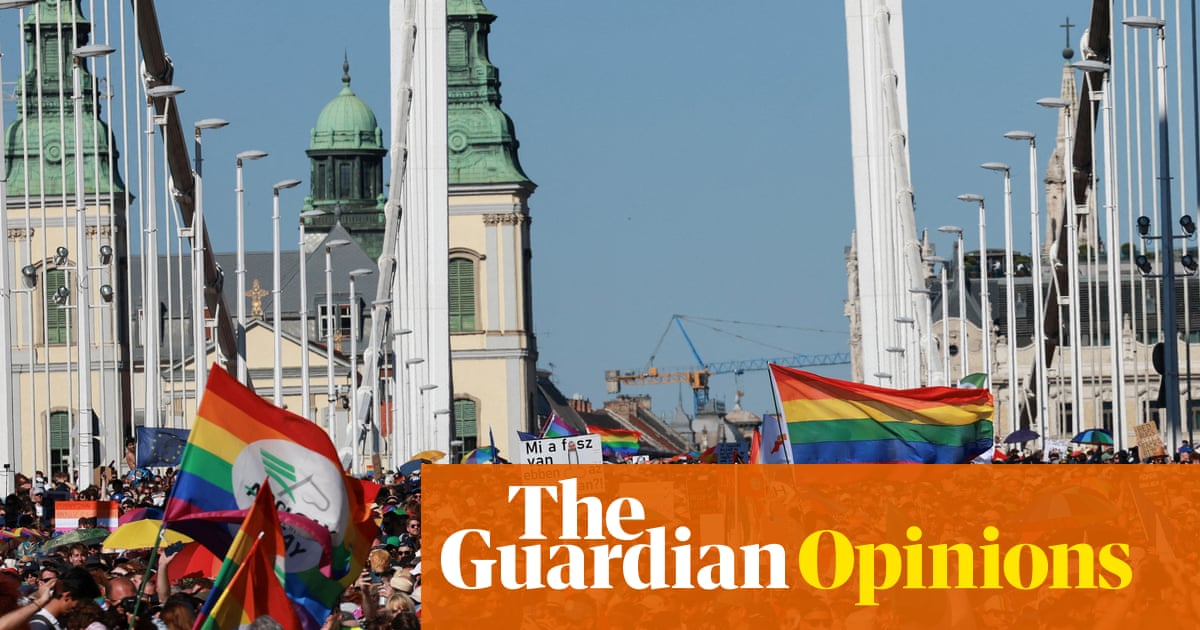In late 1980s Hungary, courageous environmentalprotestsagainst an unpopular dam project played a part in the eventual collapse of the country’s communist regime. Originally focused on protecting the quality of drinking water for about 3 million Hungarians, some of the largest demonstrations seen since the 1956 revolution came also to symbolise a wider rejection of one-party political rule. An era was coming to an end, as authority began to drain away.
It would be premature to predict a similar fate for Viktor Orbán’sself-styled“illiberal” government, which presides over what the European parliament has described as a “hybrid regime of electoral autocracy”. Mr Orbán has ruthlessly consolidated his power since becoming prime minister in 2010, not least through gradually exercising a suffocating hold across the media and civil society. But the extraordinary events of the weekend, after his government’s attempts tobanBudapest’s annual Pride parade, suggest a new vulnerability.
Organisers had hoped that maybe 40,000 people would brave intimidation, possible fines and the controversial use of facial-recognition technology, after an amendment to Hungary’s constitution allowed LGBTQ+ events to be designated a threat to children. In the event, on a scorching summer’s day in Budapest, theyestimatedthat between 185,000 and 200,000 may have turned up in solidarity. It was, by far, the biggest Pride event ever to be held in the city. Out on the streets were large numbers of first-timers, parents with sons and daughters, and demonstrators fromacrossthe mainstream political spectrum.
The scale of this backlash points to a significant prime ministerial own-goal. Trailing his former ally turned bitter critic,Péter Magyar, by a substantial margin in polls, Mr Orbán chose to target the LGBTQ+ community, just as he has targeted migrants in the past. In attempting to become the first European Union leader to ban Pride, his principal aim was to rally support across the right, goad Brussels and set a polarising trap for Mr Magyar. But the outcome was the largest anti‑government demonstration since 2010, and a mass mobilisation in defence of the broader principles of freedom of assembly and minority rights.
Mr Magyar, who did not attend the march,limitedhimself on Saturday to criticising Mr Orbán’s perennial efforts to “turn Hungarian against Hungarian, in order to create fear and divide us”. Eschewing the prime minister’s culture wars, his Tisza party has focused campaigning relentlessly on living standards, healthcare and corruption. In a country that, on Mr Orbán’s watch, has become one of thepoorestin the EU, that is a sensible approach.
But the size of thePrideturnout should stiffen sinews in Brussels if, as seems inevitable, Mr Orbán resorts to ever more desperate tactics to retain power. More than 70 MEPs took part in the march, and the equalities commissioner, Hadja Lahbib, was also in Budapest to meet civil society organisations. Overall, though, Brussels’s response to Mr Orbán’s provocation was constrained by a fear of being seen to interfere in the lead-up to next spring’s election.
That now looks like a misreading of the national mood. Freedom of assembly and non-discrimination are core, non-negotiable values that must be respected by any EU member state. As they passed in such numbers over Erzsébet Bridge, with the Danube below, Saturday’s marchers made that point in unforgettable fashion.
Do you have an opinion on the issues raised in this article? If you would like to submit a response of up to 300 words by email to be considered for publication in ourletterssection, pleaseclick here.
